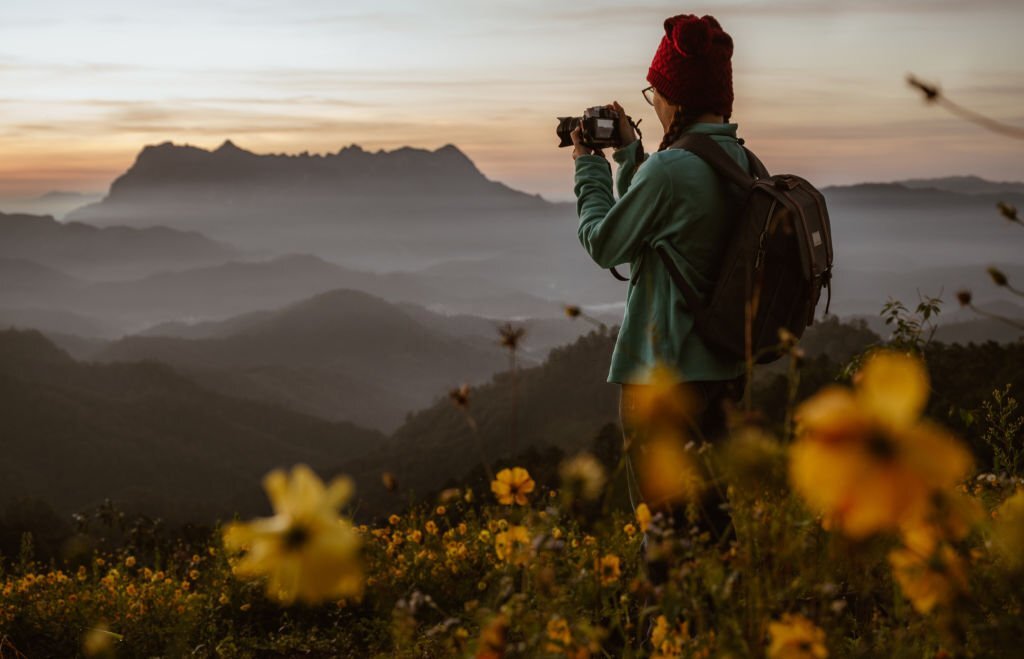
In today’s digital age, smartphones and digital cameras have made photography more accessible than ever before. Whether you’re a beginner or an enthusiast, capturing stunning photos with these devices requires some knowledge and skill. In this article, we will provide you with valuable tips to improve your photography using smartphones or digital cameras, helping you capture memorable moments with ease.
Understand Composition
The art of composition is of utmost importance in crafting captivating and visually stunning photographs. Familiarize yourself with the rule of thirds, where you divide the frame into a grid of nine equal parts and place your subject along the lines or at the intersections. The use of this technique enhances the creation of balance and visual appeal in your photographs. However, don’t be afraid to break the rules and experiment with unconventional compositions. Explore different angles, perspectives, and framing techniques to add creativity to your images. By considering the background and foreground elements, you can create a more dynamic composition.
When it comes to composition, it’s also important to pay attention to leading lines. These are natural or man-made lines that guide the viewer’s eye through the photo, creating a sense of depth and drawing attention to the main subject. Leading lines can be anything from roads and pathways to fences, rivers, or architectural elements. Look for these lines in your surroundings and use them strategically to enhance your composition.
Master Lighting Techniques
Among the fundamental elements of photography, lighting emerges as a paramount factor with immense significance. It can dramatically affect the mood, atmosphere, and overall quality of your images. When shooting with smartphones or digital cameras, it’s essential to understand how light behaves and how it interacts with your subject. Natural light is often the best choice for capturing appealing photos. Take advantage of the golden hours, which are the periods shortly after sunrise and before sunset when the light is softer and warmer. During these times, the long shadows and golden hues can add depth and dimension to your photos.
Experimenting with different types of lighting can also yield interesting results. Backlighting, where the main light source is behind the subject, can create a beautiful glow or silhouette effect. Side lighting can enhance textures and create dramatic shadows. Diffused lighting, such as on an overcast day, can produce a soft, even illumination. Understanding these techniques and learning to observe and manipulate light will significantly improve the quality of your photographs.
In addition to natural light, you can also explore the use of artificial lighting. Experiment with different types of lighting equipment such as external flashes or portable LED lights. These tools can help you control and shape light to achieve the desired effect in your photos. Understanding the principles of lighting and how to use it creatively will give your images a professional touch.
Utilize Camera Features and Apps
Smartphones and digital cameras offer a variety of features and settings that can enhance your photography. Take the time to explore and familiarize yourself with the capabilities of your device. Many smartphones have advanced camera apps that provide manual controls for exposure, focus, white balance, and other settings. By taking control of these parameters, you can have more creative freedom and capture photos with greater precision.
Additionally, consider downloading photography apps that offer advanced features beyond the default camera app. These apps often provide additional editing tools, filters, and effects that can take your photos to the next level. Some popular photography apps include Adobe Lightroom, Snapseed, VSCO, and ProCamera. Experiment with different apps to find the ones that suit your style and preferences.
Learn Basic Editing
Post-processing is an essential part of digital photography. Even the best photos can benefit from some adjustments and enhancements. Familiarize yourself with basic editing techniques using photo editing software or smartphone apps. The most commonly used adjustments include adjusting brightness, contrast, saturation, and sharpness. However, be careful not to over do it and lose the natural look of the image. Strive for a balance between enhancing the photo and preserving its authenticity.
In addition to global adjustments, consider using selective editing tools to make specific changes to certain areas of your photo. This can help you draw attention to your subject, correct minor imperfections, or emphasize certain elements. As with any skill, learning to edit photos effectively takes practice and experimentation. Don’t be afraid to try different techniques and styles until you find what works best for you.
Practice and Experiment
Photography is an art form that requires practice and continuous learning. The more you photograph, the better you will become. Take your smartphone or camera with you wherever you go and make it a habit to capture images regularly. This constant practice will help you develop your eye for composition, lighting, and capturing decisive moments. Don’t limit yourself to specific subjects—experiment with different genres of photography. Photograph landscapes, people, animals, architecture, still life, and anything else that catches your attention.
Embrace the freedom that digital photography provides by taking multiple shots of the same subject using different settings and angles. This will allow you to explore various creative possibilities and learn how different settings affect your images. Review your photos critically and analyze what worked and what didn’t. This self-reflection will help you understand your strengths and areas for improvement. Seek feedback from others, join photography communities, and participate in photography challenges to gain different perspectives and learn from fellow photographers.
Conclusion
Photography with smartphones or digital cameras offers incredible opportunities for creativity and self-expression. By understanding composition, mastering lighting techniques, utilizing camera features and apps, learning basic editing, and practicing regularly, you can elevate your photography skills and capture stunning images. Remember that photography is a continuous learning process, and each click presents an opportunity to improve. So, grab your device, explore your surroundings, and let your creativity shine through your photographs. With dedication and practice, you can create photographs that not only capture moments but also evoke emotions and tell stories.